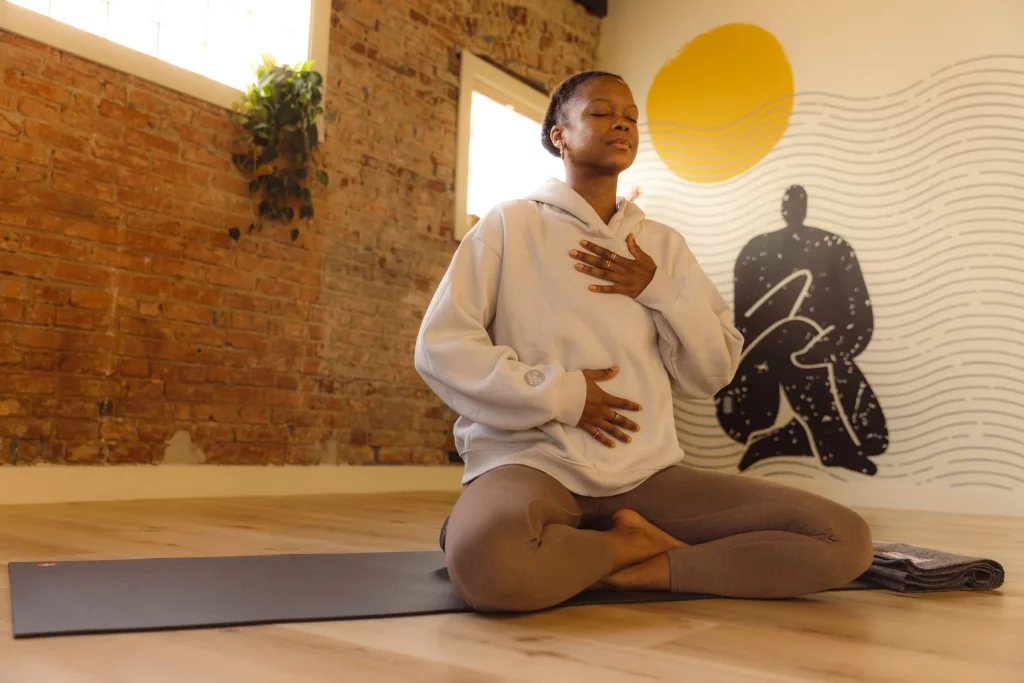The Body as Messenger
What if your tight chest, clenched jaw, or aching back were not random discomforts but deeply intelligent signals from your emotional world? What if your body held a language of its own—one designed not to betray you with pain but to guide you toward healing? Modern medicine increasingly acknowledges the mind-body connection, but ancient traditions have known it all along: the body is not just a vessel—it is a storyteller. Emotions are not only felt in the mind; they live, move, and sometimes get stuck in the body. Understanding how to read these somatic signals through practices like body scanning and intuitive movement can be a profound step toward emotional resilience, self-awareness, and holistic well-being.
The Science of Somatic Intelligence
Somatic intelligence refers to the body’s capacity to perceive, store, and communicate emotional and sensory information. Neuroscience supports this idea through concepts like interoception—the sense of the internal state of the body. Interoception allows us to notice a racing heart when anxious or a fluttering stomach when excited. These bodily sensations aren’t incidental; they are data. The vagus nerve, which connects the brain to vital organs, plays a key role in this communication loop. When emotions arise, they trigger physiological responses in the body, creating a feedback system that can inform or overwhelm us depending on our awareness.
Somatic memory is another vital component. Traumatic experiences that cannot be fully processed cognitively are often stored in the body, manifesting as chronic tension, fatigue, or illness. This is why talk therapy alone may not always suffice—because the body remembers what the mind forgets or denies. Approaches that include somatic awareness offer a more complete path to healing.
Emotions as Physical Sensations
Each emotion carries its own physiological signature. Anger may feel like heat in the face and tension in the fists. Grief might sit heavily in the chest or cause throat constriction. Anxiety often leads to shallow breathing and a tight solar plexus. Joy may create a sense of lightness or warmth throughout the body.
These sensations are not symptoms to be numbed; they are signals to be interpreted. Cultivating awareness of them allows for earlier and more compassionate intervention. Rather than suppressing or intellectualizing emotions, somatic practices teach us to listen, feel, and respond with curiosity and care.
What Is Body Scanning?
Body scanning is a foundational mindfulness practice that involves slowly and systematically bringing awareness to different parts of the body, typically from head to toe or vice versa. It is used in meditation, trauma recovery, and stress reduction protocols like MBSR (Mindfulness-Based Stress Reduction). The goal is not to fix or change sensations but to notice them as they are—tight, open, heavy, numb, tingling, or even absent.
Regular body scanning cultivates interoceptive sensitivity, helping individuals tune into subtle cues of distress or ease before they become overwhelming. Over time, this awareness builds a stronger connection between body and mind, enhancing emotional regulation, grounding, and decision-making.
To begin a body scan, you might lie down or sit comfortably, close your eyes, and start by noticing your breath. Then you move your awareness through your body in segments: the forehead, the jaw, the neck, the shoulders, and so on. Each area is observed without judgment. If tension or discomfort is found, it is met with breath and gentle curiosity.
Intuitive Somatic Practices
While body scanning is more structured, intuitive somatic practices emphasize spontaneous, body-led exploration. These practices allow emotions and sensations to surface and resolve through movement, sound, and embodied attention.
Examples include:
- Somatic Movement: Unstructured movement that arises in response to inner sensation. This could be swaying, stretching, or shaking. It helps release stored emotion and energy.
- Vocalization: Using sound to express what words cannot—moaning, sighing, humming, or even yelling in a safe space.
- Touch: Placing your hands on parts of the body that call for attention. This could be the heart, belly, or temples.
- Breathwork: Using intentional breath patterns to regulate the nervous system and access deeper emotional layers.
- Grounding Gestures: Using posture and movement (like placing feet firmly on the ground or crossing arms over the chest) to create a sense of safety and containment.
Intuitive somatic practices invite you to trust your body’s wisdom. There is no right or wrong way to move or feel. The body is allowed to lead, express, and resolve in its own time.
The Role of Trauma and the Nervous System
Trauma fundamentally alters the relationship between the body and the self. When overwhelmed by an experience, the nervous system may respond with fight, flight, freeze, or fawn mechanisms. These responses are not just mental—they are deeply physical. Over time, unprocessed trauma can result in chronic dysregulation, making it difficult to feel safe, relaxed, or connected.
Somatic practices, especially those that involve slow, gentle, and attuned attention, help to rewire these trauma patterns. By working with the body, individuals can gradually restore a sense of agency and safety. This is especially powerful for those who struggle with disassociation or emotional numbness—a common consequence of trauma.
Polyvagal theory, developed by Dr. Stephen Porges, provides a scientific framework for understanding how somatic work supports trauma healing. It emphasizes the importance of the vagus nerve and its role in helping the body shift from survival mode to a state of social engagement and connection.

From Suppression to Expression
In many cultures, emotional suppression is normalized. We’re told not to cry, to be strong, to get over it. This conditioning creates a disconnect between what we feel and what we express. Somatic practices gently dismantle this disconnect, offering a pathway back to embodied authenticity.
When emotions are allowed to move through the body rather than being trapped or denied, they complete their natural arc. Anger can transform into clarity. Sadness can evolve into softness. Fear can yield to courage. This emotional alchemy is not about bypassing pain but moving through it with embodied awareness.
Practical Applications in Daily Life
Somatic awareness doesn’t have to be confined to therapy sessions or yoga studios. It can be woven into everyday routines:
- Morning Check-In: Spend a few minutes each morning scanning your body and naming what you feel. This sets the tone for embodied presence.
- Emotional First Aid: When overwhelmed, place a hand on your chest or belly, take slow breaths, and name the sensation you feel. “Tight,” “hot,” “shaky”—this reduces emotional intensity and grounds awareness.
- Movement Breaks: Between tasks, stand up and stretch, shake your arms, or walk mindfully. This discharges tension and renews focus.
- Before Difficult Conversations: Scan your body. Are you clenched, shallow-breathing, or tense? Ground and breathe before engaging.
- Evening Release: Let your body move intuitively before bed—roll on the floor, yawn, or rock. This supports emotional digestion and better sleep.
Listening to the Wisdom of Symptoms
Rather than seeing bodily symptoms as merely problems to fix, somatic practices encourage us to ask: What is this trying to tell me? A headache might point to unspoken anger. An upset stomach could reflect fear or overwhelm. While it’s crucial to rule out medical causes, it’s equally important not to ignore emotional underpinnings.
This doesn’t mean we “blame” emotions for illness. Instead, we understand health as an interplay between biology, psychology, and environment. Emotions, when unacknowledged, can compound stress, weaken immunity, and contribute to chronic disease. Conversely, emotional awareness can enhance resilience, promote recovery, and improve quality of life.
The Integration of Somatic Work and Therapy
Many mental health professionals now incorporate somatic approaches into their practices. Therapies like Somatic Experiencing (developed by Peter Levine), Sensorimotor Psychotherapy, and Hakomi combine talk therapy with body-based techniques. These approaches recognize that healing often happens not just through insight but through felt experience.
For coaches, healers, and wellness practitioners, integrating somatic methods can deepen client transformation. The body becomes a partner in growth, not a passive recipient of guidance. Clients report feeling more empowered, embodied, and emotionally clear when their body’s voice is honored in the process.
Creating a Personal Somatic Practice
You don’t need to be an expert to begin somatic work. What matters most is intention, attention, and consistency. Here are simple steps to create your own practice:
- Set the Space: Choose a quiet, comfortable space. Light a candle, play soft music, or sit near a window.
- Begin with Breath: Slow your breathing and drop into your body.
- Scan and Sense: Move your awareness through the body. What do you notice? Where is there ease? Tension? Numbness?
- Follow the Impulse: Let your body guide you. Do you want to stretch? Sigh? Rock? Trust the impulse.
- Name the Feeling: If an emotion arises, name it and locate it. “This feels like sadness in my chest.” Stay with it kindly.
- Close with Gratitude: Thank your body for its wisdom, even if what you found was difficult. This builds trust and continuity.
The Role of Community and Witnessing
While personal practice is powerful, somatic work in community adds another layer of healing. Being witnessed in embodied expression—whether through movement, storytelling, or ritual—can dissolve shame and restore connection. Group settings like somatic workshops, dance therapy, or trauma-informed yoga create spaces where bodies are celebrated, not judged.
In a world that often demands disconnection—from self, others, and the natural world—somatic practice is a radical act of remembrance. It reminds us that we belong to ourselves and to each other, not just in theory but in sensation, breath, and movement.
Conclusion: Coming Home to the Body
Your body is not your enemy. It is your oldest friend, your fiercest protector, and your most accurate barometer of truth. When you learn to listen, really listen, you may discover that the aches and tightness you’ve fought against are actually invitations—calls to feel, to grieve, to release, to reclaim.
Somatic practices are not about perfect stillness or endless flexibility. They are about presence. They teach us to inhabit the body not just when it feels good but also when it feels hard—because both are part of the human experience. Through body scanning, breath, movement, and intuitive awareness, you can decode the messages your emotions are sending and respond not with fear, but with reverence.











































